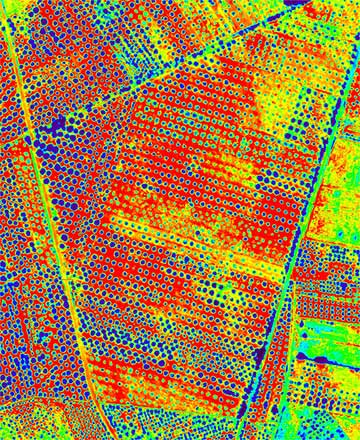
This image is a false color hyper spectral image using blue, red and NIR wavelengths to highlight olive trees in southern Italy affected by a bacteria called Xylella Fastidiosa, with the affected trees shown in brighter colors for the RGB display. This type of imagery is important because it shows one of many cases where different combinations of spectral resolution can help treat crops more quickly before they are lost to a disease or infestation. This technology is applicable to many crop production issues in all parts of the world and can help decrease the use of pesticides to only the areas that are actually affected. This not only improves production and decreases costs, but also does less damage to the surrounding ecology. On a side note this improvement in production could be a crucial part to feeding the ever growing human population on earth. The image was taken using a camera flown 500m above the ground, and was edited by Pablo J. Zarco-Tejada.
No comments:
Post a Comment